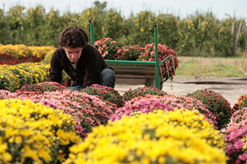Specialised plants, a major economic sector in the Pays de la Loire region
The specialized plant sectors include seeds production, orchards, vegetable crops, ornamental horticulture, medicinal and aromatic plants, viticulture and cider production. These are intensive plant productions with high added value.
These sectors represent 4,000 companies and 30,000 jobs in the Pays de la Loire Region.
Agriculture in Pays de la Loire: key figures
In 2018, agriculture in Pays de la Loire generated a turnover of 5.9 billion euros (excluding services, fodder and subsidies). The region ranks fifth nationally. 68% of the value generated by regional agriculture is generated by animal production, of which 41% by cattle products (milk and beef), compared with 32% by crop production.
The Pays de la Loire region is characterised by a great diversity of crop production.
Alongside cereals and protein-rich oilseeds, which accounted for 45% of the turnover from crop production in 2017, the region has a wide variety of crops: a vineyard from which are produced renowned wines with a high proportion of AOC, a wide range of vegetable production, a large orchard of table apples, a diversified horticultural production, as well as a great tradition in seeds and perfumed, aromatic and medicinal plants.
The region is among the leaders in horticultural plants and is the leading producer of mushrooms, lamb's lettuce, cucumber, radishes, dried beans and lily of the valley, the fourth largest producer of table apples and tomatoes and the fifth largest producer of leeks in France.
Fruits
The Pays de la Loire region ranks fourth in France for the production of table apples and first for small red berries.
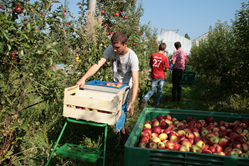 apple orchard - Campus de Pouillé |
|
Table apples (4780ha) represent 62% of the regional and 13% of the national orchard area. 232,791 t were produced in 2017. Traditional varieties are well present (Golden, Gala, Braeburn, Granny Smith) but a dynamic varietal renovation program (Pink Lady, Ariane, Jazz...) has been implemented for many years.
Vegetables
The region is known for its leading position in the fresh vegetable sector. It is the leader for certain species such as lamb's lettuce with 84% of the national production in 2017 and radishes with 30%.
Heated greenhouses provide the largest volumes for shipping (tomatoes and cucumbers for France and for export). The market gardening areas are rather reserved for other fresh vegetables for shipping and for local needs in short supply chains. Vegetables are also produced in rotations with crops, often for processing industries.
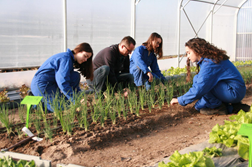 Vegetable production - campus de Pouillé |
|
Seed production
The Pays de la Loire region is a region with a seed tradition that benefits from skills and know-how.
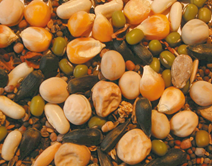 Seeds |
|
Areas increased by 5% compared to 2016 with 3 main categories of seeds: 16,700 ha of field crop seeds (straw cereals, maize and sorghum, oilseeds and protein crops), 9,400 ha of fodder and grass seeds and 3,800 ha of vegetable and flower seeds.
Horticulture and nursery
The Pays de la Loire region is one of France's leading horticultural and nursery production regions (young plants, potted plants, bedding plants, nursery plants, perennials and aromatic plants, cut flowers, bulbs...). Its recognized and historical know-how gives it a national and international reputation in the sector.
A strong concentration of structures has taken place since 2010. The renewed interest in plants, especially among the youngest, the revival of plants in cities, the awareness of consumers, local authorities and landscape designers to buy French plants are encouraging activity and local sourcing. The more flourishing economic situation is recreating a dynamic of investments.
Viticulture
Located in the western part of the Loire Valley wine basin, the Pays de la Loire vineyards represent 4% of the vines cultivated in France. 83% of the vineyards produce wines under AOP (protected designation of origin).
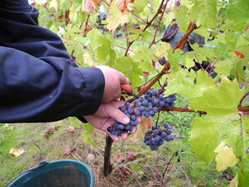 Viticulture - Lycée de Montreuil Bellay |
|
Upstream and downstream of these productions, many companies in the agricultural supplies and agricultural equipment sector are also located in the region.
Source : Chambre d’agriculture Pays de la Loire – Synthèse Panorama de l’agriculture des Pays de la Loire (Janvier 2020) et Chambre d’agriculture Pays de la Loire –Panorama de l’agriculture des Pays de la Loire - Données 2017 (Avril 2019)
Major challenges to take up
- Societal issues related to food and human health as well as the quality of the living environment and well-being ;
Regulatory issues related in particular to the Ecophyto plan to reduce the use of agrochemicals; - Economic issues, given the threats facing a regional industry that has significant economic weight but little public support in a highly competitive and internationalized market.
In this context, strengthening the capacity for innovation of actors in the specialized plant sector throughout the value chain appears to be the main lever for competitiveness in order to face international competition and to meet the medium and long-term challenges.
VEGEPOLYS VALLEY competitiveness cluster
An original skills centre specialised in Plants has gradually become stronger and more structured in the Pays de la Loire region, mainly in Angers, where it gave birth in 2005 to the VEGEPOLYS competitiveness cluster, which became VEGEPOLYS VALLEY in 2019. VEGEPOLYS VALLEY gathers together firms, research and training centres in the plant field around some innovative projects to strengthen the firms' competitiveness.
The region also hosts Plante & Cité, the national technical centre on green spaces and urban landscape, whose aim is to develop innovation among landscape companies and local authorities.
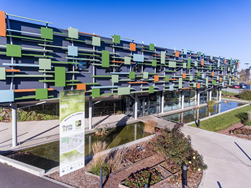
Maison du végétal - Angers
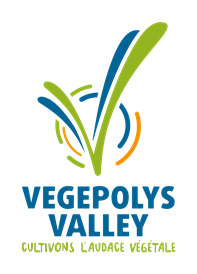
logo VEGEPOLYS VALLEY
The 4th largest research cluster in France in plant sciences
The research forces of the Pays de la Loire Region in the field of plants are grouped together within the Federative Research Structure for Plant Health and Quality (SFR 4207 QUASAV). SFR QUASAV brings together 400 people in 8 research and 1 experimental units, including 170 professors and researchers and 60 PhD students, and manages 3 shared technical facilities and 3 technological platforms.
The joint research unit Research Institute on Horticulture and Seeds (UMR IRHS - Inrae, Agrocampus Ouest - University of Angers) with 250 people is the largest unit of SFR QUASAV.
The SFR QUASAV presentation leaflet. SFR QUASAV in video.
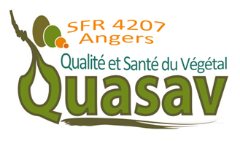
logo SFR QUASAV
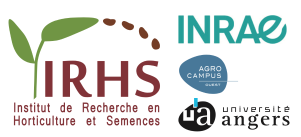
logo IRHS
|
|
The 1st training centre in France
Angers hosts the largest concentration of plant science students in France, including 3,000 higher education students.
Votreavenirvegetal.fr - the portal site dedicated to jobs and training in the vegetal sector in the Pays de la Loire region (available only in French at the moment) https://votreavenirvegetal.fr/
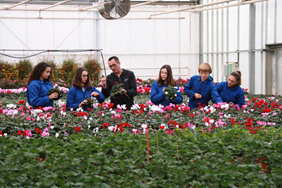
Ornamental plant production - Campus de Pouillé
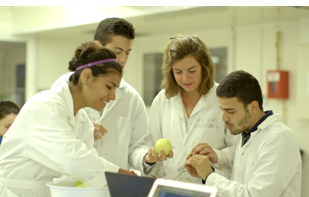
Students ESA
Angers Plant Campus
Since September 2015, most of the research forces have been grouped together in Angers within the Plant Campus (Campus du Végétal): 24.8 M€ of investments for 8400 m² of laboratories and offices, 6900 m² of greenhouses and growth chambers (S1,S2,S3) as well as the Maison du Végétal which houses VEGEPOLYS VALLEY and Plante&Cité.
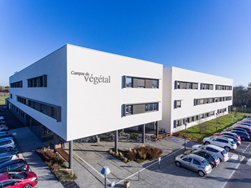 Angers Plant campus - photo Interaview |
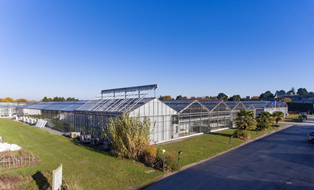 Greenhouses - Angers Plant campus - photo Interaview |


